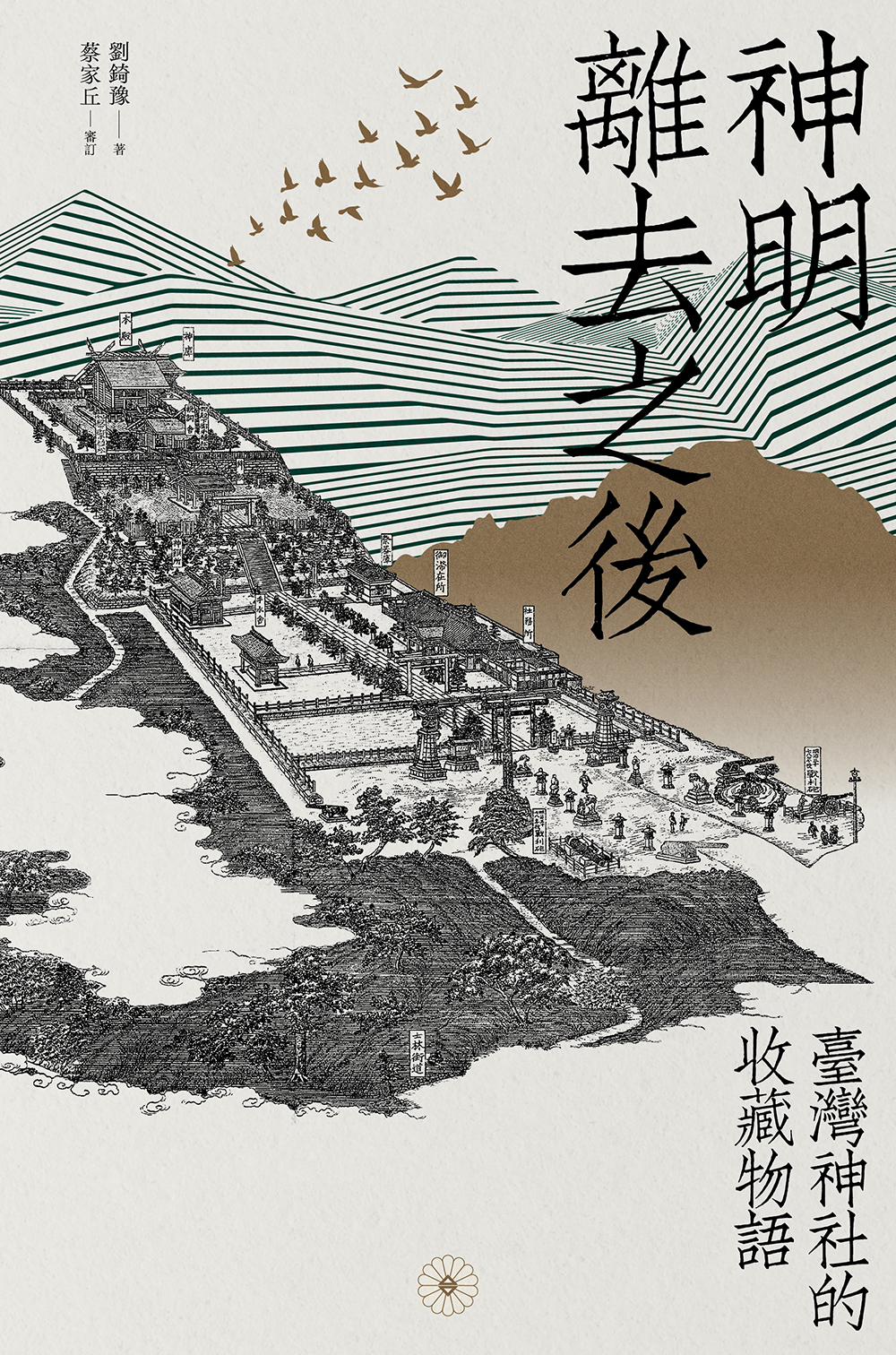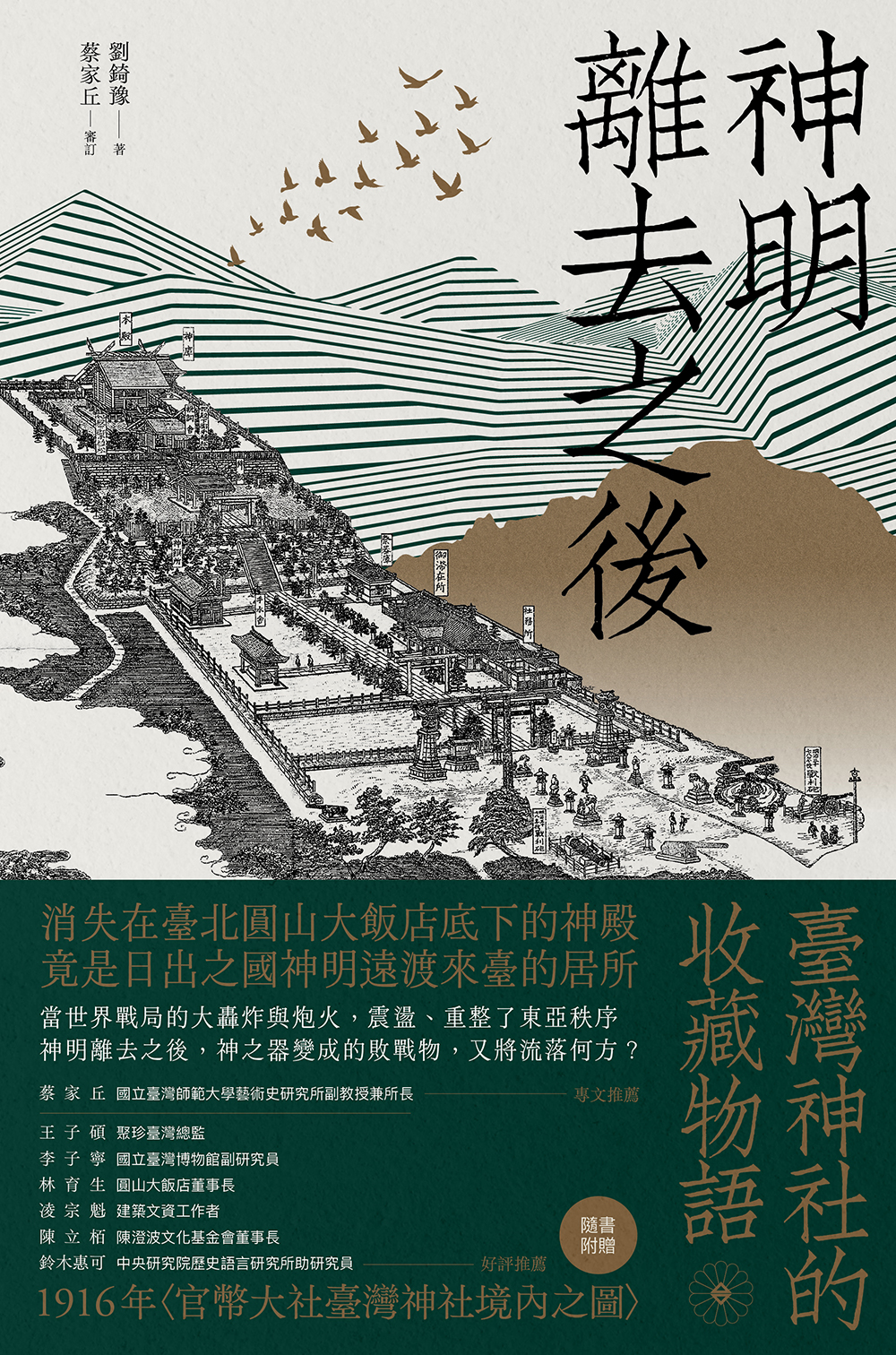神明離去之後: 臺灣神社的收藏物語
After the Gods Depart: The Stories of Artifacts from the Taiwan Grand Shrine
歷史/時代
2024 實體與數位同步
本書聚焦於二戰後臺灣神社文物的意外命運,揭示它們如何隨著政權轉變而改變功能與意義。1945年戰後「廢祀」儀式中,殖民時期的神道神像與文物被象徵性地送回日本,而許多在臺灣的文物則被遺忘、散佚或重新利用,成為戰敗帝國的遺物。書中透過十件關鍵文物,探討臺灣神社的發展歷程,包含畫作、工藝品、紀念碑等,並深入分析戰後臺灣對這些文物的再詮釋。特別是那些在神社中供奉的、具有深刻政治與精神象徵的物品,如何在歷史的洪流中隨著時代變遷而轉變,揭示了戰後臺灣的政治與精神轉型。
This book traces the unexpected fate of Taiwan’s Shinto shrine artifacts after Japan’s defeat. Through ten key objects, it reveals how wartime symbols of loyalty were forgotten, repurposed, or reinterpreted, reflecting Taiwan’s political and spiritual transformation amid shifting regimes and the legacy of Japan’s colonial rule.
作者介紹
-
作者
劉錡豫
劉錡豫(書院街五丁目的美術史筆記) 國立臺灣藝術大學古蹟藝術修護學系學士,國立臺灣師範大學藝術史研究所碩士。曾擔任公共電視臺《畫我臺灣》第三季企劃,現經營粉絲專頁「書院街五丁目的美術史筆記」,從事臺灣美術史的教育推廣寫作。參與合著《漫遊按讚藝術史》(2022),文章多散見於典藏雜誌(古美術.今藝術.ARTouch)、季刊《薰風》(獲第47屆金鼎獎優良出版品雜誌類專欄寫作)與陳澄波文化基金會「名單之後」系列。另有數篇研究論文,發表於《臺灣美術學刊》、《史物論壇》、與《國立臺灣博物館學刊》等。
作者介紹
-
作者
Chi-Yu Liu
Liu Chi-Yu holds a bachelor’s degree in Cultural Heritage Conservation from the National Taiwan University of Arts and a master’s degree in Art History from National Taiwan Normal University. He previously worked as a content planner for the third season of Painting Taiwan, a television program produced by Taiwan Public Television. He currently runs the Facebook page Art History Notes from Shoinmachi 5-chome(書院街五丁目的美術史筆記), through which he promotes and writes about Taiwanese art history for general audiences. He is a contributing author to an illustrated introduction to art history aimed at general readers and has published numerous articles on Taiwanese art in a range of print and online media. His work often bridges scholarly research and public outreach, with writing that appears in magazines, cultural journals, and collaborative history projects. He has also authored several academic papers in peer-reviewed journals focused on art history and museum studies.
作品簡介
本書聚焦於二戰後臺灣神社文物的意外命運,揭示它們如何隨著政權轉變而改變功能與意義。1945年戰後「廢祀」儀式中,殖民時期的神道神像與文物被象徵性地送回日本,而許多在臺灣的文物則被遺忘、散佚或重新利用,成為戰敗帝國的遺物。書中透過十件關鍵文物,探討臺灣神社的發展歷程,包含畫作、工藝品、紀念碑等,並深入分析戰後臺灣對這些文物的再詮釋。特別是那些在神社中供奉的、具有深刻政治與精神象徵的物品,如何在歷史的洪流中隨著時代變遷而轉變,揭示了戰後臺灣的政治與精神轉型。
作品簡介
This book traces the unexpected fate of Taiwan’s Shinto shrine artifacts after Japan’s defeat. Through ten key objects, it reveals how wartime symbols of loyalty were forgotten, repurposed, or reinterpreted, reflecting Taiwan’s political and spiritual transformation amid shifting regimes and the legacy of Japan’s colonial rule.
出版資訊
- 類型風格 歷史/時代
- 作品尺寸 17x26cm cm
- 作品集數 1集已完結
- 出版年份 2024
-
出版方式
實體與數位同步
- ISBN(實體) 9786267376218
- ISBN(數位) 9786267376195
- 適合年齡 不分年齡
- 是否為跨國題材 是,關於日本 、 是,關於中國
- 作品規格(頁數) 144
- 作品規格(字數) 62,000
-
其他補充資訊
- 媒合目的 版權交易





